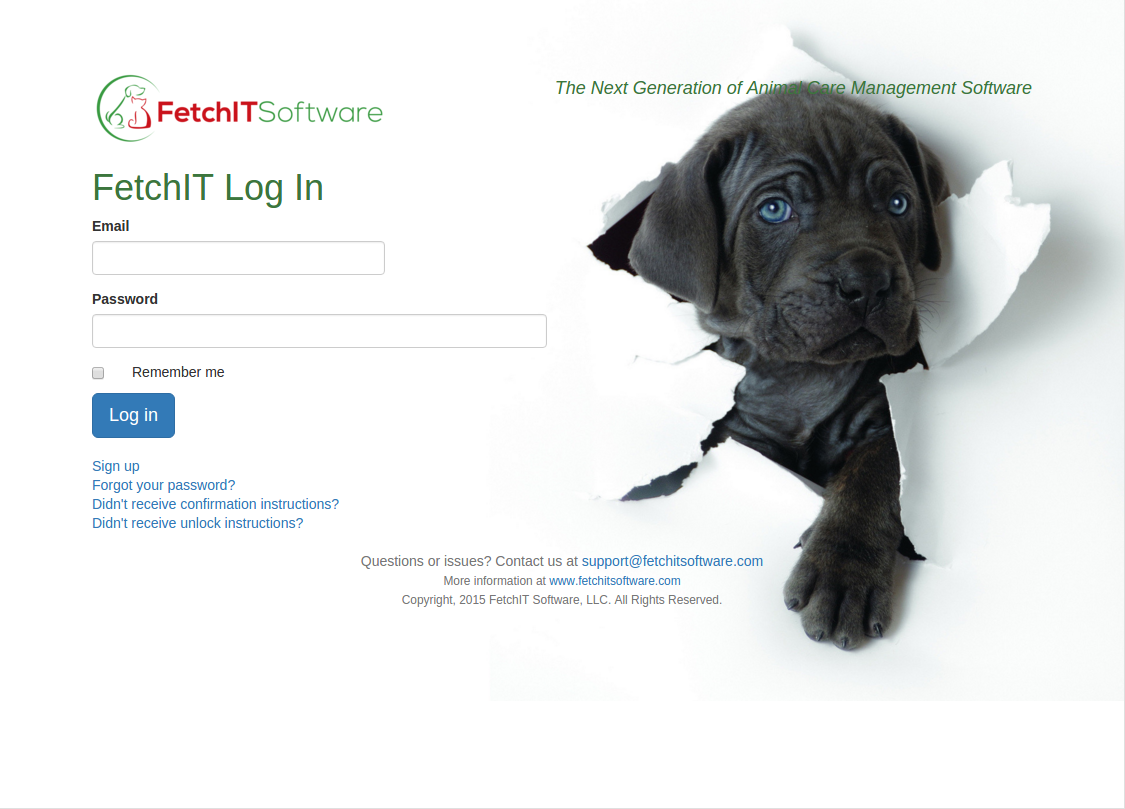How We Got Here Posted January 16, 2016 by Chip
I started volunteering at Austin Animal Center (AAC), the shelter for the City of Austin, about 4 years ago. It was a heady time to be a volunteer. The city had just started implementing a no-kill initiative in which 90% or more of the animals who entered the shelter would leave it alive. They were also about to move to a brand new, modern shelter and leave behind the crumbling ruin of the old shelter. It was a progressive animal lover's dream, and it provided me with some badly needed stress relief from my job as a software developer at a startup. As time went by, I got more involved and started working with and helping the shelter staff.

And that's when I saw the software they were using. It looked archaic, and it was - it was 90's-era Microsoft desktop technology, something I hadn't seen since I'd left IBM in 1999. And it was awful to use; I found out later it had originally been a prison management system that was repurposed to do animal care. And of course it wasn't available online to staff or volunteers, because it was pre-Internet technology. The only thing available online to look up animals available for adoption was a portal on the AAC web site with some laughably limited search capabilities. (Side note: I went the web site of this vendor not long after I first saw it. Their front page touted the fact that their software was Y2K complian, which they finally changed sometime in 2014. Some of you may be too young to know what "Y2K" means; check out Wikipedia.)
The awfulness of this software made life difficult for everyone. Senior staff couldn't extract the information they needed to improve operations at the shelter. Staff struggled to use the software to do their jobs. Customers had to endure long delays to get information on animals and to adopt or foster animals. Volunteers struggled to get information on animals to help customers or help work with the animals to make them more adoptable. It even made it difficult to upload photographs of the animals (a crucial feature to help animals get adopted) because volunteer photographers had to edit their photos on their own systems and then transfer their photos to a desktop at the shelter in order to upload them.
Just to put this in perspective, AAC takes in over 17,000 animals a year. It was trying to implement a no-kill mandate with its rescue partners while being understaffed and under budgeted. Being hampered with bad software made a difficult job even more difficult. So it's a tribute to the staff and volunteers of AAC that they not only met the goal of saving the lives of 90% of the animals but that they have consistently improved the live outcome rate - it is over 96% as I write this, making AAC the largest no-kill shelter anywhere.
I got involved because of my background. We volunteers needed information on the dogs; it wasn't easily available from the software the shelter was using, so we came up with our own solutions. First it was a Google spreadsheet populated by scraping the portal on the website. Then we found out about a report of all the dogs that got sent out daily as a result of a public information request, so we imported that into a simple web application. I kept adding features to the web app so that it eventually had features like full-text search. I was working long hours at a startup, so I didn't have time to do more, but I thought long and hard about creating a full-featured system to replace the mediocre software AAC and other shelters and rescues are burdened with.
And the chance finally came. I got to take an extended break and started working on FetchIT with the help of a few talented friends. We conceived of a system that streamlined shelter operations and helped facilitate adoptions by leveraging both the best proven web technologies and the emerging consensus of what constitutes best practices at animal shelters and rescues. We developed prototypes of metrics to measure shelter practices and performance and showed them to AAC management, who found actionable information that they used to improve operations. We built visualizations of intakes and 311 calls to Animal Services to identify where the animals were coming from and where the problems were. AAC has asked us to provide training materials for the original web app I wrote to new volunteers being trained to do customer service. A new version of our app will be released in the next few weeks, to be shortly followed afterwards by the beta version of our first product.

We'll be working with a few selected shelters and rescues to vet our product and improve it, because we believe you can only create great software by working closely with the people who actually use it. We will be purpose-built - a product designed from the ground up to support shelters and rescues. We're going to bring shelter software into the 21st century by leveraging the tools and techniques of big data analytics and robust enterprise-quality software development. We're going to break the mold of proprietary vendor lock-in by providing you with open access to your data - including open Interfaces that make it possible to easily integrate with 311 call systems, microchip manufacturers, volunteer and donation management systems, and services like PetFinder.
And we will always be mindful that the purpose of this software is to make it easier to run your shelter or rescue by streamlining operations and helping animals get adopted. So we will continuously be working with our customers and continually improving our system - so we can help shelters run efficiently so they better serve their communities and save more animals.
 512-710-7454
512-710-7454

